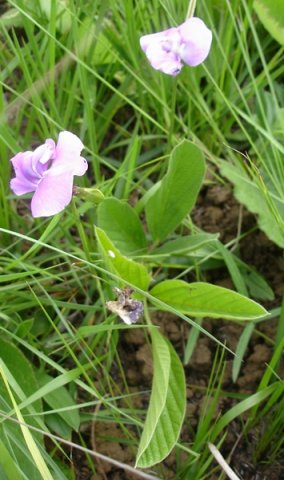Vigna vexillata

Author: Ivan Lätti
Photographer: Judd Kirkel Welwitch
Vigna vexillata, sometimes commonly called the wild cowpea and previously scientifically V. davyi and V. angustifolia among other names, is a slender perennial, a trailing creeper growing from a tuberous and sometimes a large, woody rootstock.
The three-foliolate leaves have long petioles and narrowly lanceolate to elliptic leaflets, not lobed at the base. In picture the central, larger leaflet has a longish petiolule, the lateral leaflets about sessile. Ascending to incurving lateral veins emerge from the leaflet midribs, all sunken on the upper surfaces. The sparsely hairy blades are paler green on their lower surfaces. Stipules are present. So are mucros at the leaflet tips.
The species distribution is widespread across the eastern parts of South Africa, only absent from the two westerly provinces, the Western Cape and the Northern Cape. The plants also grow in some neighbouring countries and in tropical Africa where it is well established. The photo was taken in the KwaZulu-Natal Drakensberg.
The habitat is grassland and open woodland. The habitat populations of all four the recognised varieties are deemed of least concern early in the twenty first century.
The plant features in horticulture, also in traditional medicine and magic (Manning, 2009; Leistner, (Ed.), 2000; Pooley, 1998; Van Wyk and Malan, 1997; Germishuizen and Fabian, 1982; Letty, 1962; iNaturalist; http://redlist.sanbi.org).

